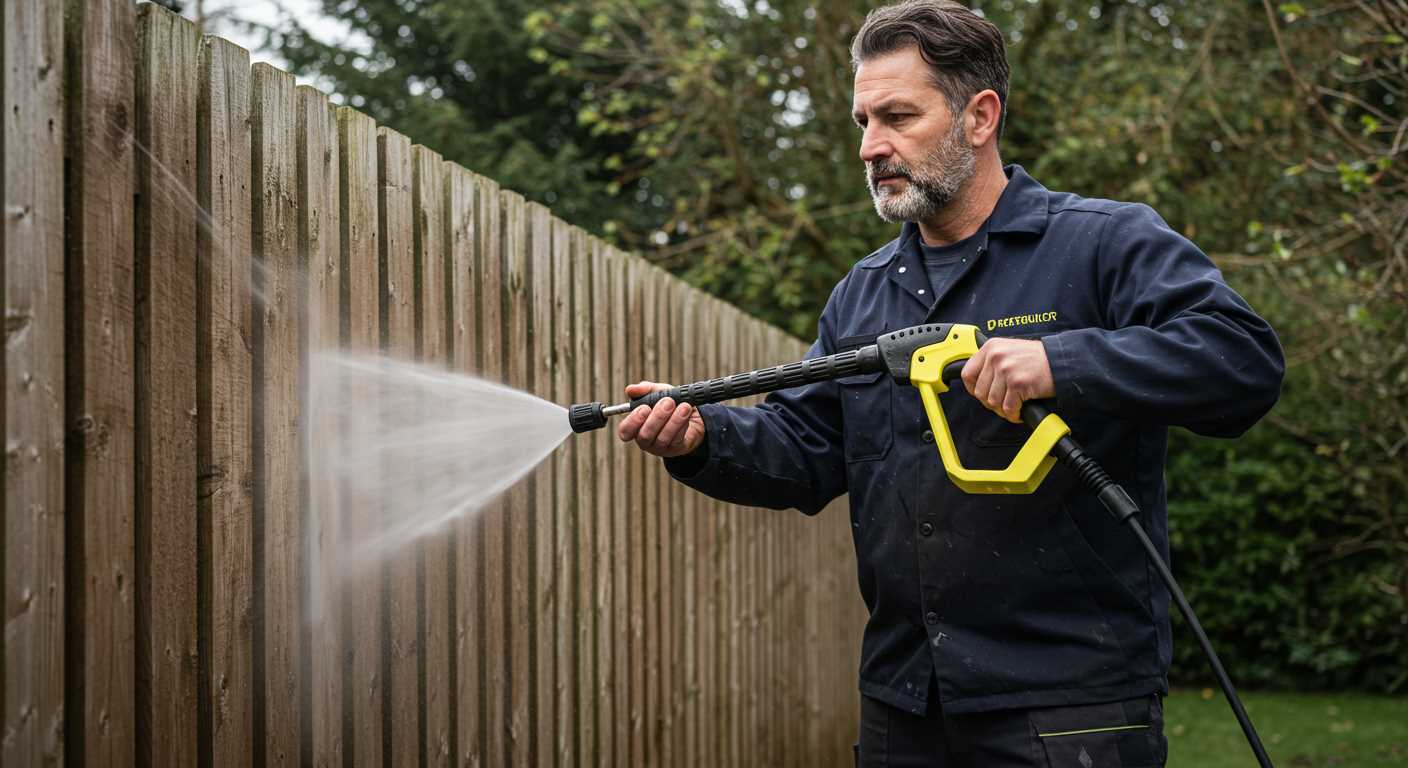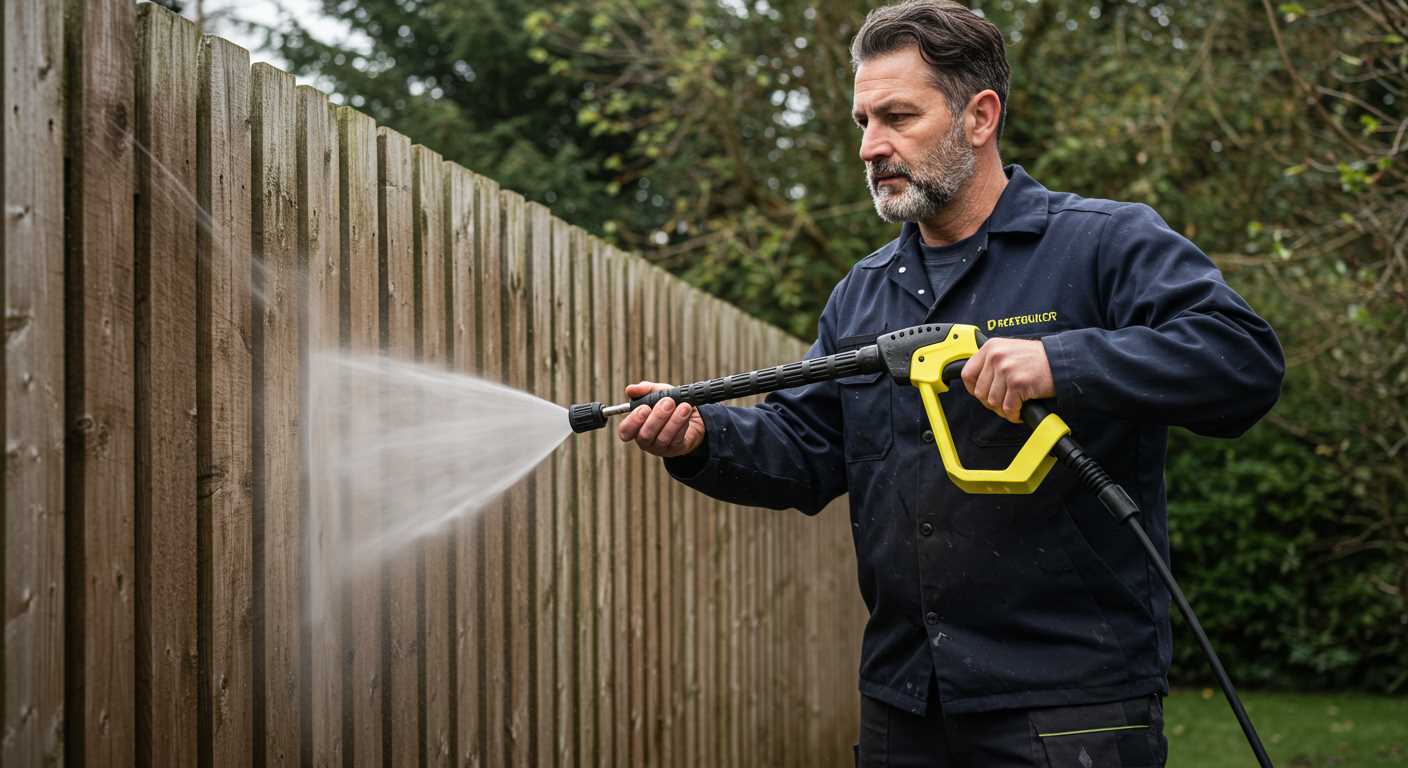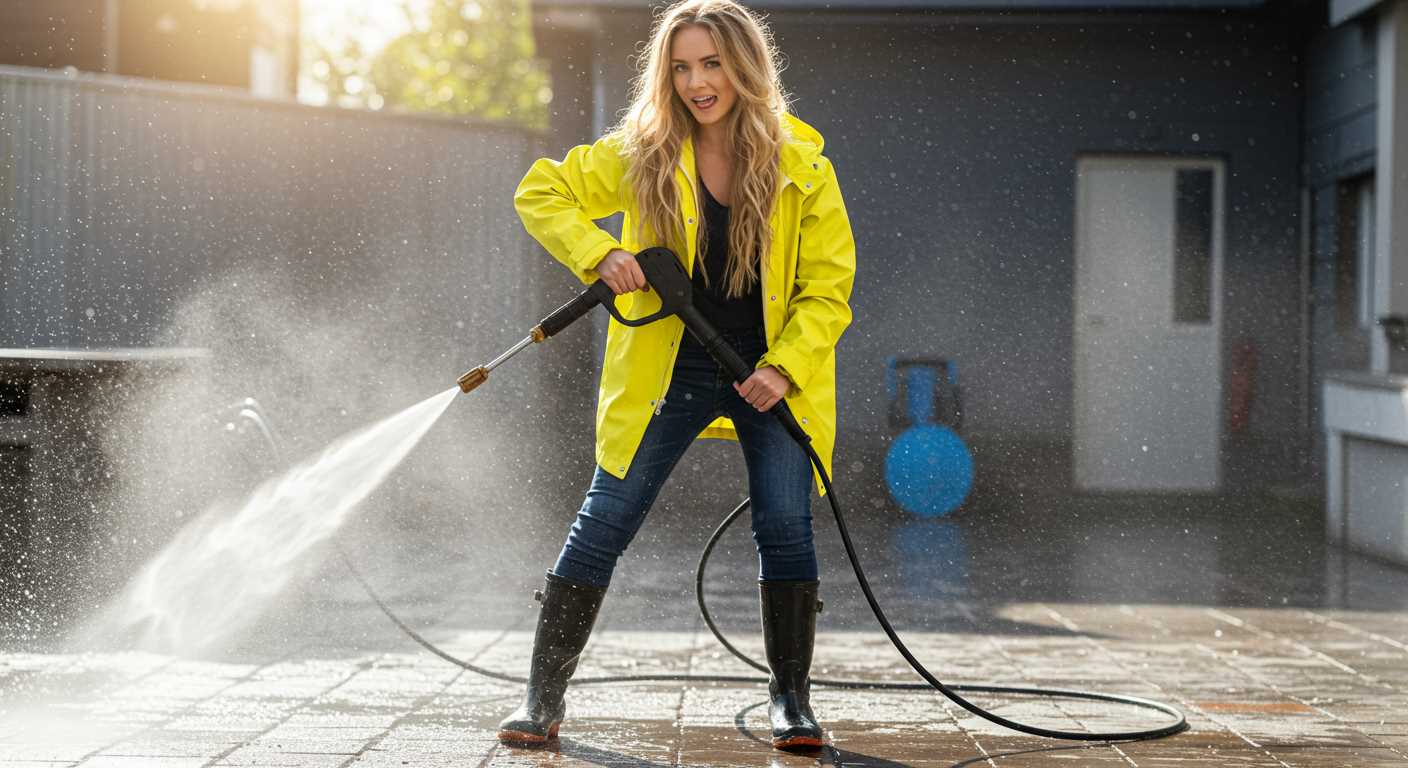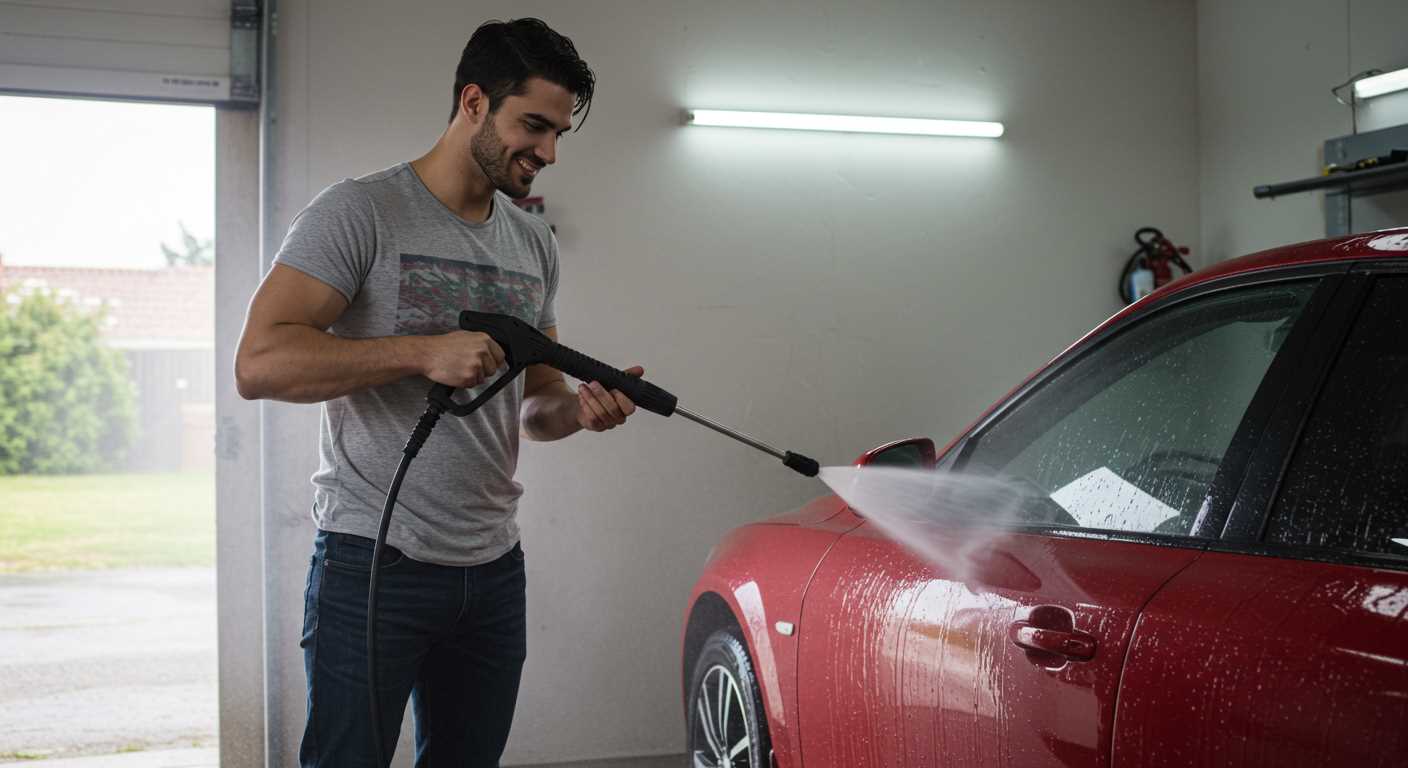




Absolutely, a high-pressure cleaner can effectively tackle unwanted paint stains on various surfaces. In my years working with cleaning equipment, I’ve seen firsthand how powerful jets of water can lift stubborn markings from brick, concrete, and even wooden fences. The key is to adjust the nozzle and pressure settings according to the material you’re working with. For softer surfaces, a lower setting prevents damage while still delivering satisfactory results.
I recall a project where a local community centre was defaced with spray paint. Armed with a high-pressure cleaner, I set the pressure to a moderate level and used a fan nozzle to cover a wider area without focusing too much force on a single spot. The results were impressive; the paint began to dissolve almost instantly, revealing the original surface beneath. It’s crucial to maintain a consistent distance from the surface to avoid etching or damaging it.
For tougher stains, I recommend using a combination of hot water and a suitable cleaning solution. This approach breaks down the paint more effectively. I’ve tried various detergents, but always opt for those specifically designed for heavy-duty cleaning. This not only enhances the performance of the equipment but also makes the task much easier and quicker.
Don’t forget to wear protective gear. High-pressure water can be hazardous, especially if it makes contact with skin or eyes. Always prioritise safety while engaging in such cleaning tasks. With the right technique and equipment, you can restore surfaces to their former glory, turning a messy situation into a clean slate.
Graffiti Elimination with a High-Pressure Cleaning Device
Using a high-pressure cleaning device can be quite effective for tackling unwanted markings on various surfaces. From my experience, here are some key insights to consider:
- Surface Compatibility: Different materials react uniquely. Brick and concrete often respond well, but softer surfaces like wood can sustain damage.
- Water Temperature: Hot water can enhance the cleaning process significantly. If the equipment allows, utilise heated water to break down the paint more efficiently.
- Nozzle Selection: The right nozzle matters. A 15-degree nozzle typically provides a concentrated stream that can penetrate stubborn stains. Adjust the distance to avoid surface damage.
- Cleaning Solutions: Sometimes, a dedicated cleaning solution is necessary. Combine it with the water stream for better results–look for products specifically designed for paint removal.
- Technique: Start from a distance and gradually move closer. This helps prevent any surface damage while assessing how the markings respond to the cleaning force.
- Safety Gear: Always wear protective eyewear and gloves. The force of the water can throw debris, and safety should be your top priority.
- Trial and Error: Don’t hesitate to experiment. Every situation can differ, and sometimes it takes a bit of tweaking to find the best approach.
In my years of testing, I’ve seen remarkable results when all these factors are combined thoughtfully. Persistence is key; some stains may require multiple passes or additional treatments. Always be patient and methodical for the best outcome.
Understanding Graffiti Types for Effective Cleaning
Identifying the specific kind of markings on a surface is crucial for an efficient clean-up strategy. Different compositions require tailored approaches for optimal results. For instance, tags made with spray paint typically adhere strongly, necessitating higher water pressure and specialised detergents. Conversely, chalk or water-based markers are easier to tackle and usually come off with lower intensity.
Common Types of Markings
Spray paint is prevalent in urban art, often challenging to eliminate due to its durable nature. When dealing with such markings, consider using a hot water setting if your cleaning equipment allows. This can help dissolve the paint more effectively.
Another type is vinyl or film stickers, which may leave adhesive residues behind. These can often be removed with a lower-pressure setting combined with a suitable solvent to break down the sticky substance.
Environmental Considerations
Be aware of the surrounding environment. When cleaning outdoor surfaces, always check for nearby plants or animals. Certain cleaning agents can be harmful. For instance, if you’re cleaning a fence, and you’re unsure about the safety, consider researching related topics such as can an electric cattle fence hurt a dog to understand the broader implications of your cleaning methods.
Ultimately, knowing the type of marking and its composition can save time and effort, ensuring you have the right tools and techniques at your disposal for a successful clean-up.
Choosing the Right Pressure Washer for Graffiti Removal
For tackling unwanted markings, selecting the correct equipment is key. My experience has shown that a unit with a minimum of 3000 PSI is ideal for this task. The higher the pressure, the better the chances of effectively eliminating stubborn stains without damaging the surface underneath.
Not all models are created equal. Look for machines that offer adjustable nozzles. This feature allows you to switch between a wide spray for gentle applications and a more concentrated jet for tougher spots. I remember a time when I had to switch nozzles multiple times during a job; it saved me a lot of effort and time.
Water flow rate is another factor to consider. Aim for at least 2.5 GPM (gallons per minute). A higher flow rate helps to rinse away residues more efficiently. I once underestimated this aspect, and it turned a straightforward task into a prolonged one. Ensuring adequate flow can streamline the entire process.
Electric models are often quieter and easier to handle, but they may lack the power required for heavy-duty tasks. In contrast, gas machines offer more strength but can be cumbersome. If you’re working on larger projects, gas-powered options have consistently delivered superior results for me.
Don’t forget about accessories. A rotating brush attachment can be invaluable. I’ve used them on numerous occasions, and they’ve significantly improved the results by agitating the surface while applying water. It’s a simple addition that can make a big difference.
Lastly, consider portability. If you’re moving between sites, a machine with wheels and a lightweight design will save your back during transport. I’ve learned that convenience can make or break a day’s work. Choosing the right equipment not only ensures efficiency but also makes the task a lot more enjoyable.
Best Nozzles and Techniques for Graffiti Cleaning
For effective elimination of unwanted markings, the right nozzle selection is paramount. I’ve consistently found that using a 25-degree fan nozzle strikes a balance between pressure and coverage. This nozzle allows for broader dispersion while still maintaining sufficient force to dislodge paint without damaging the underlying surface.
Recommended Nozzles
The 15-degree nozzle is also an excellent choice for tougher stains. It delivers a more concentrated jet, making it ideal for stubborn paint. However, caution is necessary; this nozzle can strip old wood or damage softer surfaces if used carelessly. Always test on a small area first.
Additionally, consider using a rotary nozzle, which combines the power of a standard nozzle with a spinning motion. This can significantly enhance cleaning efficiency, especially on large areas. I’ve seen it work wonders in commercial settings where time and thoroughness are critical.
Techniques for Optimal Results
Prior to starting, wet the area generously to help loosen the paint. You’ll want to maintain a distance of about 12 to 18 inches from the surface. This distance is crucial; getting too close can cause damage, while being too far can reduce effectiveness. Move the nozzle in a consistent motion, overlapping each pass slightly to ensure complete coverage.
For an extra boost, consider applying a suitable cleaning solution before rinsing. This can break down the paint’s bond with the surface, making it easier to wash away. Also, don’t forget about the outlet hose for pressure washer; a high-quality hose can enhance water flow and make the entire process smoother.
Lastly, always wear appropriate protective gear, including goggles and gloves, to safeguard against any splashes or debris. Following these recommendations has led to successful clean-ups in my experience, and I’m confident they’ll help you achieve the same results.
Preparing Surfaces Before Using a Pressure Washer
Before tackling any surface with high-powered cleaning equipment, thorough preparation is key. Start by clearing the area of any debris, furniture, or obstacles that might obstruct your work. This not only ensures a more efficient process but also prevents any accidental damage to surrounding objects.
Next, inspect the surface for loose paint, cracks, or any signs of damage. Repairing these issues beforehand can lead to better results and help avoid further complications during the cleaning. If the surface is porous, consider applying a suitable primer or sealer to enhance the effectiveness of the cleaning process.
Conduct a test patch in an inconspicuous area to assess how the surface reacts to the high-velocity stream. This can reveal whether the material can withstand the force without sustaining damage. If the test patch shows wear or degradation, you might need to adjust your approach or consider alternative cleaning methods.
It’s also wise to wet the surrounding vegetation and ground before commencing. This helps protect plants from the powerful spray and any chemicals that may be present in the cleaning solution. Keep a hose nearby for quick rinsing if needed.
Lastly, wear appropriate safety gear, including goggles and gloves. Protecting yourself while working with powerful equipment is a must, as it prevents injuries from flying debris or accidental splashes. Taking these steps ensures a smoother and safer cleaning experience, leading to satisfactory results.
Safety Precautions During Graffiti Removal
Always wear appropriate personal protective equipment (PPE). This includes safety goggles, gloves, and a mask to shield against harmful chemicals and debris. During my years in the field, I’ve seen many neglect this step and face unnecessary injuries or respiratory issues.
Ensure the work area is clear of bystanders and pets. High-pressure jets can send debris flying, which may cause injury to those nearby. I remember one job where a curious dog got too close – thankfully, I had already set up a safe perimeter.
Check the surface conditions beforehand. Wet or slippery areas increase the risk of accidents. I’ve had a close call on a damp surface; it’s a lesson learned. Always assess your surroundings for stability and potential hazards.
Be mindful of chemical use. Some cleaning agents can react adversely with surfaces or create hazardous fumes. When I started, I used a strong solvent without adequate ventilation, and the experience was unpleasant. Always choose safer alternatives when possible and work in well-ventilated spaces.
When operating equipment, maintain a firm grip and stance. I’ve experienced equipment kickback, which can be jarring. Position yourself correctly to counterbalance any unexpected movements.
| Safety Measure | Description |
|---|---|
| PPE | Goggles, gloves, and masks to protect against chemicals and debris. |
| Clear Area | Ensure no bystanders or pets are within the work zone to avoid accidents. |
| Surface Check | Examine surfaces for wetness or instability to prevent slips. |
| Chemical Safety | Use appropriate cleaning agents and ensure good ventilation. |
| Equipment Handling | Maintain a secure grip and stance to manage unexpected equipment movements. |
Always have a first aid kit on hand. Accidents can occur, and being prepared can make all the difference. I’ve had to use mine more than once, and it’s a reminder of how important it is to be ready for anything.
Post-Cleaning Care for Surfaces
After tackling unsightly markings, proper maintenance is critical to preserving the integrity of the cleaned surfaces. Here’s what I recommend based on years of hands-on experience.
- Inspect the Surface: Check for any damage post-cleaning. Look for cracks, peeling paint, or any structural issues that may have been hidden under the layers of unwanted markings.
- Apply a Sealant: For porous materials like brick or concrete, applying a sealant can prevent future staining. Choose a breathable sealant that allows moisture to escape while protecting against dirt and grime.
- Regular Maintenance: Establish a routine cleaning schedule. Regularly washing surfaces can help prevent the buildup of dirt and deter unwanted markings from adhering.
- Use a Protective Coating: Consider using a protective coating designed for the specific material. This can provide an additional layer of defence against potential future attacks.
- Monitor Surroundings: Keep an eye on the area around the cleaned surfaces. Sometimes, environmental factors or nearby activities can lead to new marks appearing.
From my experience, taking these steps not only keeps surfaces looking fresh but also extends their lifespan. Each time I’ve implemented these practices after a thorough clean, the results have been rewarding. It’s all about being proactive rather than reactive.
Lastly, educate anyone who uses the area about the importance of maintaining cleanliness. Awareness can be a powerful tool in preventing future issues.
Alternative Methods for Tough Stains
For stubborn marks that resist traditional cleaning methods, consider using a combination of chemical solutions and manual techniques. One highly effective approach is to apply a specially formulated solvent designed for the type of paint or ink used in the markings. Make sure to select a product appropriate for the surface you’re treating; for example, concrete requires a different formula compared to brick or wood.
Using Chemical Solutions
Before applying any chemical, conduct a spot test in an inconspicuous area to prevent damage. Follow the manufacturer’s instructions for dilution and application. After applying the solvent, allow it to sit for the recommended duration, as this will help to break down the offending material. Once the time has elapsed, scrub the area with a stiff-bristled brush to lift the stain. Rinse thoroughly with water to wash away any residue.
Manual Techniques
If chemicals aren’t an option or the stains are still persistent, consider using a scraping tool. A plastic scraper can be effective on smooth surfaces without risking damage. For textured surfaces, a wire brush may be necessary but use caution to avoid gouging. Always wear protective gear, including gloves and goggles, to safeguard against splashes and debris. After scraping, finish with a thorough wash to ensure the area is clean and free from any remnants.







.jpg)


